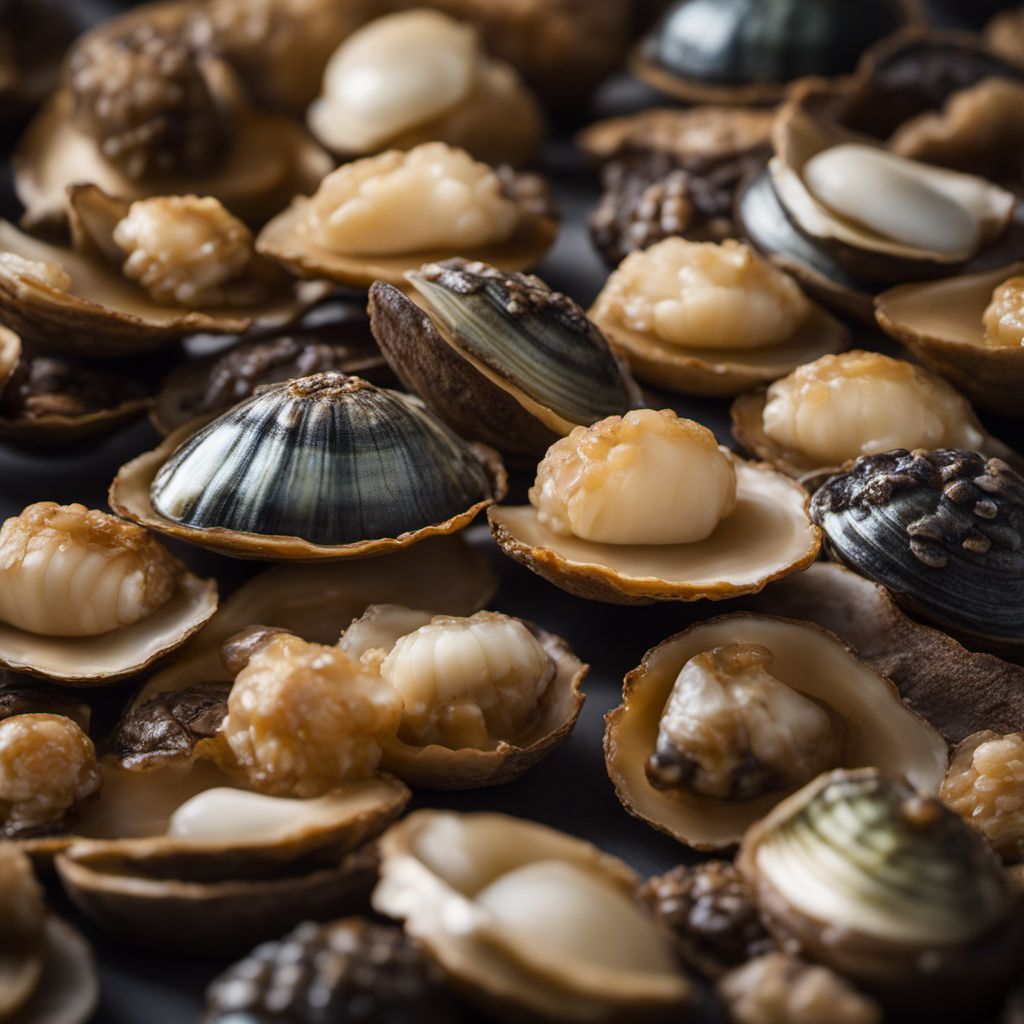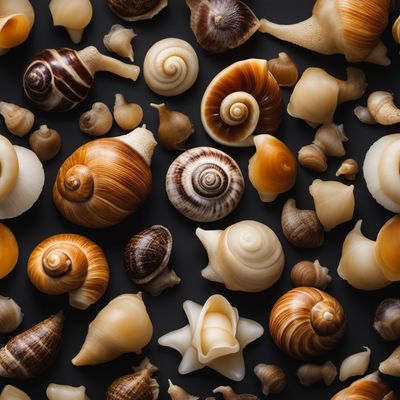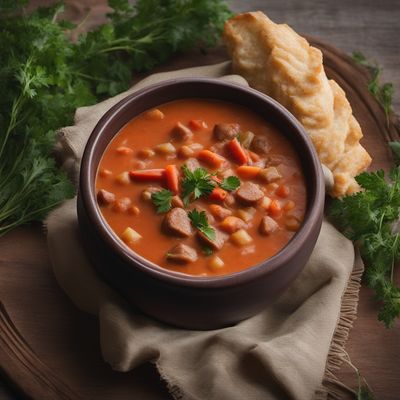
Ingredient
Abalones, winkles, conchs
Oceanic Delicacies: Exploring the World of Abalones, Winkles, and Conchs
Abalones are large sea snails with a firm, muscular foot and a delicate, slightly sweet flavor. They have a smooth, dome-shaped shell with a pearly interior. Winkles, also known as periwinkles, are small sea snails with a spiral-shaped shell. They have a tender, slightly chewy texture and a briny, oceanic taste. Conchs are large marine snails with a thick, spiral shell. They have a firm, dense flesh that is mildly sweet and reminiscent of shellfish.
Origins and history
Abalones have been harvested for centuries by indigenous coastal communities in various parts of the world, including North America, Asia, and Africa. Winkles have a long history of consumption in Europe, particularly in coastal regions. Conchs are native to the Caribbean and have been a staple in Caribbean cuisine for generations.
Nutritional information
Abalones, winkles, and conchs are all excellent sources of lean protein, low in fat, and rich in essential minerals such as iron, zinc, and selenium.
How to select
When selecting abalones, choose ones that are heavy for their size, with a vibrant shell and no cracks. For winkles and conchs, look for specimens with intact shells, avoiding any that are damaged or have an unpleasant odor.
Storage recommendations
Live abalones, winkles, and conchs should be kept in a cool, well-ventilated place with a damp cloth or seaweed to maintain moisture. Cooked abalones, winkles, and conchs should be stored in airtight containers in the refrigerator and consumed within a few days.
How to produce
Abalones, winkles, and conchs are typically harvested from the wild, making them challenging to produce on a small scale. However, some aquaculture operations cultivate abalones in controlled environments.
Preparation tips
Abalones can be steamed, grilled, or pan-fried, while winkles and conchs are often boiled or steamed. To tenderize abalones, they can be pounded or marinated before cooking. Winkles and conchs are typically removed from their shells and used in soups, stews, or seafood pasta dishes.
Culinary uses
Abalones are commonly used in Asian cuisines, such as in stir-fries, soups, and sushi. Winkles and conchs are popular in European dishes, including seafood stews, pasta, and salads.
Availability
Abalones are commonly found in coastal regions of North America, Asia, and Africa. Winkles are prevalent in Europe, particularly in coastal areas. Conchs are primarily available in the Caribbean.


